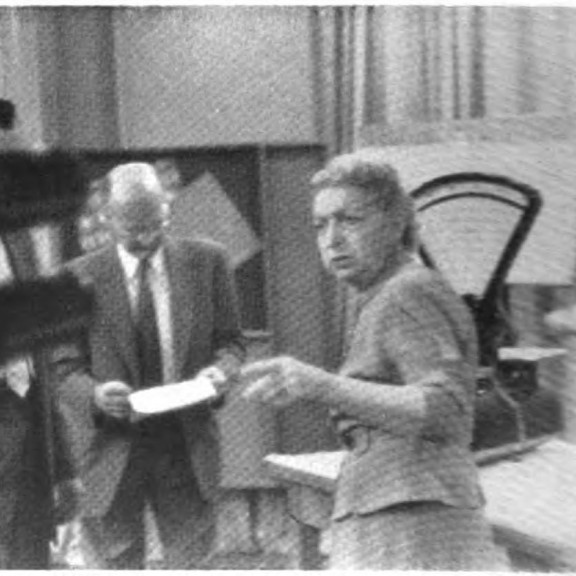Early home-ec programming provided ‘gateway’ to higher education

Jessie Heathman
Agricultural programming stretches all the way back to the beginning of WILL with the first “ag report” premiering on day one, April 6, 1922. Turning Cream into Gold was part of that day’s half hour of programming. By 1928, specialists from the University of Illinois College of Agriculture were recurring hosts on the air, talking about land, crops, livestock, and other issues of concern to farmers. WILL would begin regular broadcasts of market prices by 1935.
Much of what was heard on WILL-AM in those early days was educational and informative in nature, consisting mostly of talks from University of Illinois professors and lectures from courses. And these agricultural reports were critical to life in rural America, but they weren’t the whole picture on “life on the farm.”
Women’s roles on the farm — and in the home — were not included.
In walks the happy homemaker’s trusted guide: Jessie Heathman — or simply known as Miss Heathman to listeners, and later viewers.
For many at the time, Miss Heathman was synonymous with WILL’s original home economics programming, created in partnership with University of Illinois Extension. It was a total powerhouse in the realm of guiding women through life at home. By 1949 she was the host of two daily radio shows on WILL, Jessie Heathman and Homemakers Quarter Hour, and by 1957, she was producing, writing, and starring in Your Home and Mine on WILL-TV.
Both her radio and television shows welcomed guest experts to demonstrate and guide those at home through the do’s and don’ts of modern homemaking, but the television show bordered on the fanciful side. Your Home and Mine was recorded on a set designed to replicate Miss Heathman’s own apartment, containing a fully furnished kitchen and a dining-living room area. It was here that guests each participated in the deceipt of the show, pretending that it actually was Heathman’s apartment. The permanent cast even included a married couple in the “next apartment."
To the world, Heathman might have just been seen as a homemaker — showing other women ways to decorate a home, raise children, and feed a family — but she was so much more than that. She was a researcher, a home economist, a lecturer, a producer, a broadcaster, a professional. She was a working woman. Ironically, she was bucking the very cultural tradition she was perpetrating. Heathman was a pioneer whether she realized it at the time.
Illinois Public Media reporter Jim Meadows recently interviewed University of Michigan media historian Susan Douglas as a part of his research for the Illinois History Minutes series. Douglas believes that home economics programs, such as Your Home and Mine, offered a gateway for women into higher education during the 20th century.
“This was one way women could be professors and enter the academy, and they took enormous pride in helping other women learn all kinds of things about health, sanitation, cooking, housekeeping, how to provide the best nutrition for their children, all of that. And there was a hunger for that, especially among women, who may have been isolated on farms, or maybe couldn't afford certain women's magazines that might traffic in that kind of information, but they could get it for free on the radio.”
Heathman left the University of Illinois Extension in August of 1968, continuing her career in educational television productions in Minneapolis-St. Paul — where she lived until she died in March 1981.

